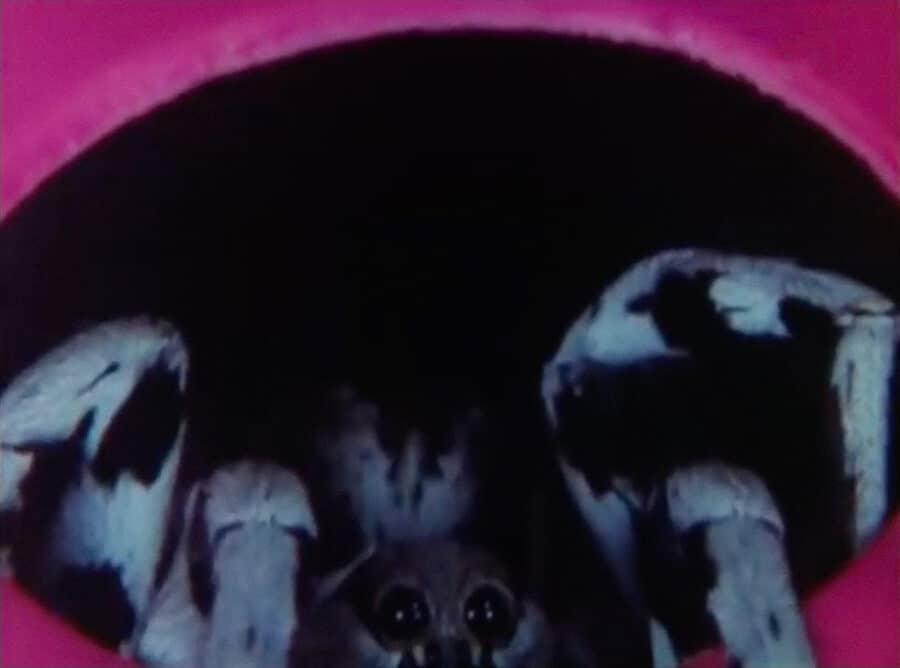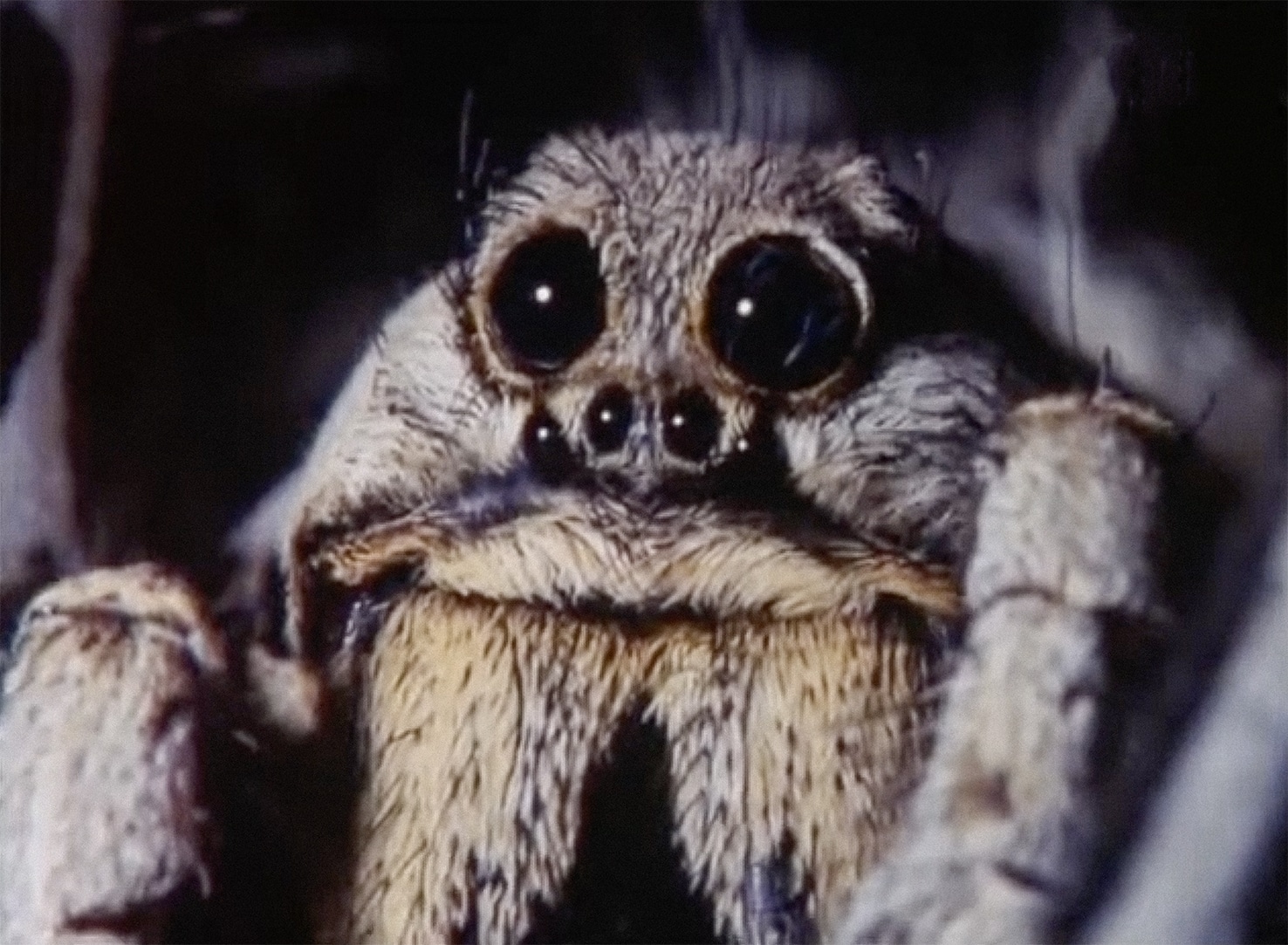At this sight of the spider, my emotion stemmed not from finding out that it was a tarantula, although this enhanced my understanding, but from not knowing what this thing was. Valuing the aesthetic vision, resisting scientific identification, pays tribute to the emotional perception, this vertigo before the unknown. The unknown is not an empty form that must be filled with knowledge; it is a promise of images. In the moment I don’t know what I am seeing, I see more, because my mind is attempting to adapt, and forms an image.
Scientists and the philosophers of the living world following on their heels will hasten to reduce such an analysis to an emotional production or symbolic representation; but this ignores how imagination and memory are involved in the relationship to images. The scientific viewpoint can help – but as one of many viewpoints, not the overriding one. It proposes setting off from the banks of interpretation to gain knowledge of ways of life, territories, organs and their functions – all things that can be beautiful and useful to know; but regardless, I’ll always see a beard rather than the spider’s fangs, or at the same time as the fangs. My gaze will not be transformed.
This would otherwise mean reverting to the pre-aesthetics era – the era of representation, going no further than the assignment of things. Animals are so eternally unfamiliar that I view them, to the contrary, as an endless mystery, a fiction.
Current works on the living world provide knowledge for viewing the world and works of art, but this knowledge does not necessarily teach us how to see (Apprendre à voir by Estelle Zhong Mengual, 2021). Godard would even say that such knowledge inhibits seeing. Images are on poor terms with concepts, as we know. Images only emerge through the “goodbye to language”, as words inhibit the seeing of things. Images presume a capacity to trust one’s perception, all the way to delirium. Images are an impossible-to-untangle mixture of perception and imagination – not simply the ideal result of a classification and a name.

To be fair, tribute must be paid to two perceptions: the first, unknowing; and the second, knowing. A few years back, we created an issue of Cahiers du Cinéma titled “Herbier”, or herbarium (April 2019), to showcase plants in film. It was a dual action, firstly lamenting the ignorance of cinephiles (and our own) as to the names of plants and flowers, and therefore naming them by adopting the scientific form of the herbarium. It was necessary to shake up descriptive laziness and understand that the filmmakers we cite know what they are filming. This first gesture thus breaks with Godard’s idea in affirming that naming is necessary to seeing – as the more that is known, the more that can be seen. But this went hand in hand with a second, dialectical gesture: what is known must be forgotten. This presumes not behaving as though everything were already known, like the experts who compulsively perpetuate the belief that they know it all and are never taken by surprise, sealing up any holes that might be breached by ignorance. But more broadly, what is known must be forgotten, to trust what is seen, so that names don’t stand in the way of things.
What is this thing? is the Grail of aesthetics, and it is likely that scientists won’t ever understand why this excites us so, why we are seeking out the great thrill of not recognizing, of no longer understanding. This metaphysical thrill is what drives images – nothing of an ineffable absolute, but to the contrary, sparking writing and talking. From this hole, images emerge – multiple, primitive, mental, and which concern not only us, in our so-called modern narcissism, but profoundly put into play our relationship to animals.
Here, there is an important distinction to be made among different types of relationships. Baptiste Morizot claims to put forward a philosophy of relating to animals, and the living world more broadly. But the living world isn’t interested in relating to us. It is first, and above all, necessary to respect this distance, and this indifference, in contrast with those relationships characterized by exchange, trade, dealmaking, in an effort to cohabitate on the premise of reciprocity. In isolated examples of cohabitation (primates, wolves), this objective is understandable, albeit debatable; but what about insects, fish, plants? Morizot’s focus is on the right way of cohabitating, with “adjusted considerations for living beings” (from the conclusion of his book Manières d’être vivant, published in French in 2020). But animals demand much more than this taming of the gaze; they demand our stupefaction, and keep their distance from us.
One form of relationship entails comparison and differentiation while keeping a distance; another form entails creating links among signs. The former supposes seeking out divergences; the latter supposes seeking out similarities. The former belongs to the aesthetic era; the latter, to the era of information and communication, of “getting in touch”.
At the sight of the spider’s face, my weapons are not scientific or communicational, but aesthetic: I am disturbed by its uncanniness, by the mechanical encrusted on the living, or by its aura, to employ three key aesthetic concepts that attempt to formulate different relationships. With the aura, Benjamin designates a relationship between nearness and farness; in Laughter, Bergson designates a relationship between the mechanical and the living – a relationship that Freud interprets entirely differently with the uncanny. All of aesthetics is based in relationships and dialectical arrangements. Relationships of time (between two species), proportions, movement, territory, between animals and ourselves, as well as relationships of movements, speed, colors, of animals themselves, their relationships to their environment – all of this directly attacks our mind, metaphysically unsettling us.
It is not simply an aesthetic model for contemplating an image that presumably opposes a model for actually encountering an animal in the field. This aesthetic-anthropological relationship is the same in nature. Morizot, who tracks wild animals, describes how when he sees a wolf, they look at each other to a certain extent like two people, coming into contact on equal footing. This affirmation is puzzling. The relationship might be viewed, rather, as complex, mysterious, undecidable, devoid of reciprocity, two gazes unable to meet. And in fact, when the anticipated moment of contact cannot take place, the tracker is disappointed. The philosopher admits that the true adventure lies in the chase itself, rather than the too-risky encounter with the animal. “The intense emotion of tracking, stronger in a way than seeing the animal with your own eyes, comes down to what is seen through their eyes” (Les Diplomates, 2016). In this strange immersive objective imitating the animist perspective, tracking is transformed into role-playing, with the human pretending to be the animal. The cultural appropriation goes hand in hand with an animal appropriation, in a relationship that inhibits the seeing of the other: there is no longer any “vision of the living world”, given this claim to see for them. It might be said that a rambler is better able to have an anthropological relationship to an animal than a tracker linking signs together. Stumbling on a fox in the forest who follows you, appearing and reappearing, without you knowing whether it is surveying you or playing with you, being caught in the gaze of an animal looking at you from behind – that is an extraordinary experience of self-dispossession, and dispossession of one’s own species.
The film spectator is this rambler – not a scientist, or a hunter tracking signs. They embrace distraction, or perhaps something more akin to the evenly suspended attention of the analyst. They don’t identify everything, and there may even be a form of foolishness in their even perception of images – calling to mind ordinary people relating to nature. Morizot mocks those who seek calm in nature, with its lively hum of combat, seduction and open-air crime. It is understandable that this philosopher of the living world wishes to open the eyes and ears of those with a distorted perception. But what perception can he offer in return? Strictly actions springing from the domain of conflict, diplomacy, social trade, seduction and territorial strategy. He describes a world in perpetual conflict – a world that is never at rest. A world opposite to the one conducive to the daydreamer’s rest, and free-floating mind. In a disturbing mirror effect, this is the very ideology taught in screenwriting handbooks today – that all stories are conflicts, first and foremost. That everyone is fighting for a territory, a conquest, making alliances, attempting seduction, getting rid of rivals, demonstrating diplomacy, etc. This social tyranny cannot be escaped. Why must our relationship to animals (and relationships between other animals) be encrusted with this? The dreamer will not hear all this noise, but will perhaps seek a connection with the whistling of an unknown bird, and if they are fond of music, listen to the song not as a mating call or a warning; and other wonders will emerge.
What form of relationship must be established with animals, in order to identify their relationships? These two different approaches are possible. Understanding a given strategy of seduction, invasion or resistance can be wonderful to enhance our vision of the living world, but should not be to the detriment of this core of strangeness in our relationships to animals. Even if all knowledge is worthwhile, it is essential to leave the door open to doubt and the mystery separating us.
Stéphane Delorme
Translated from French by Sara Heft

